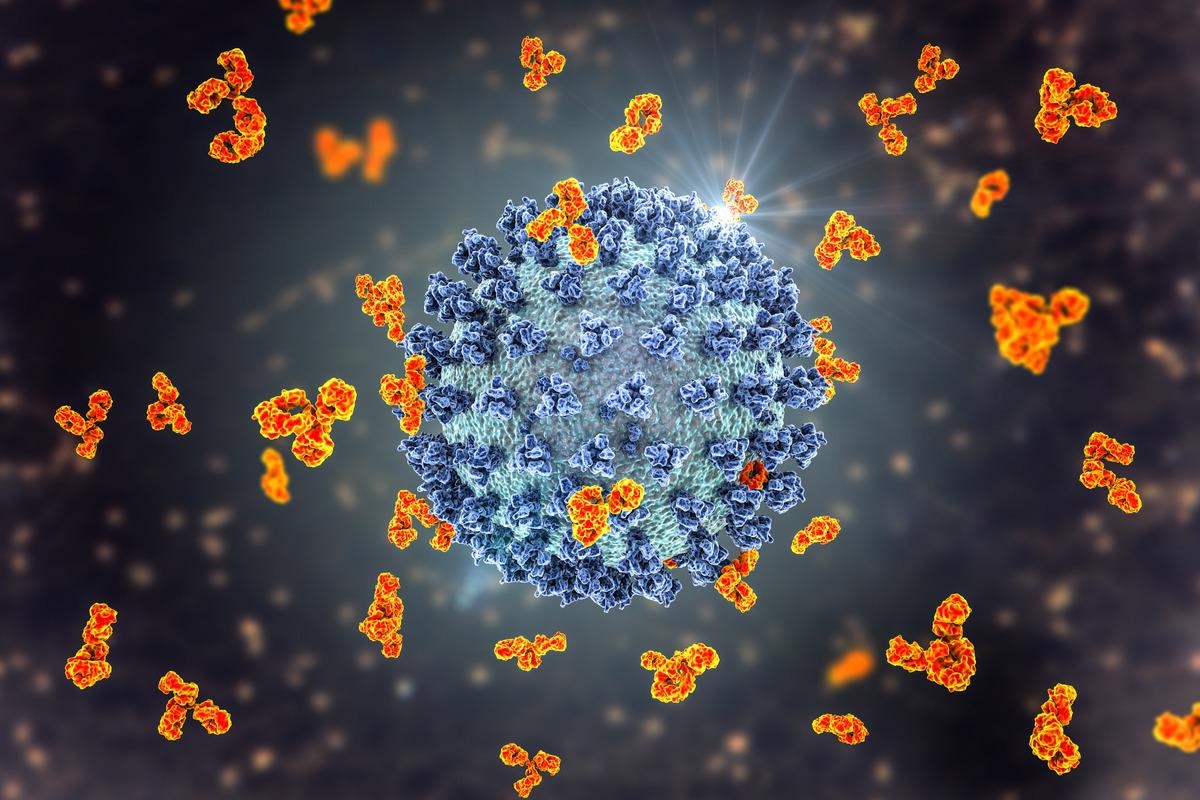 By Sam HancockReviewed by Danielle Ellis, B.Sc.Dec 13 2021
By Sam HancockReviewed by Danielle Ellis, B.Sc.Dec 13 2021When coronavirus disease 2019 (COVID-19) spread across the world, many countries were forced to enact costly and restrictive lockdowns, and it was not until the development and mass deployment of various vaccines that these ended. While several severe acute respiratory syndrome coronavirus 2 (SARS-CoV-2) vaccines were developed using conventional methods such as using attenuated forms of the virus, less traditional vaccines were also developed.
 Study: SARS-CoV-2 antibody and T cell responses one year after COVID-19 and the booster effect of vaccination: a prospective cohort study. Image Credit: Kateryna Kon/Shutterstock
Study: SARS-CoV-2 antibody and T cell responses one year after COVID-19 and the booster effect of vaccination: a prospective cohort study. Image Credit: Kateryna Kon/Shutterstock
mRNA vaccines, for instance, the BNT162B2 vaccine, expose the vaccinee to a strand of mRNA encoding for a specific antigen and rely on the host's cell machinery to translate it. Other manufacturers mounted viral surface proteins on nanoframes to allow local protein concentration to remain high, resulting in a more effective immune response. The vast majority of these vaccines targeted the spike protein, specifically the receptor-binding domain (RBD) within the S1 subunit of the spike protein. The RBD binds to angiotensin-converting enzyme 2 (ACE2), allowing viral cell entry, essential to SARS-CoV-2 pathogenicity.
In a study published in the Journal of Infection, researchers from the Netherlands Department of Medical Microbiology and Infection Control have been investigating the immune response in previously infected healthcare workers after they receive these vaccines.
The study
The scientists only included healthcare workers (HCWs) who had tested positive from SARS-COV-2 using an RT-PCR test approximately one year previously and showed significant signs of seroconversion. Blood samples were obtained by venipuncture. Serum was isolated first, and the peripheral blood mononuclear cells were further isolated using paque density gradient separation. Commercially available ELISpot assays assessed T cell responses against SARS-CoV-2 antigens.
IgG antibodies were detected using quantitative ELISA assays. Statistical analysis of the final results used data expressed as medians with interquartile range. Mann-Whitney U tests were used to compare two groups, the Kruskal-Wallis test to compare over two groups. Spearman's rank correlations assessed associations and strength of associations between groups.
The researchers included 55 SARS-CoV-2 seroconverted healthcare workers (HCW) in their final cohort. They were predominantly female and had a median age of 43. Nine of these reused vaccination, seven had already received one dose, and 16 had already received two doses.
The scientists stimulated the growth of peripheral blood mononuclear cells (PBMCs)isolated from 32 previously infected healthcare workers who had not been vaccinated. All of these showed at least weak responses to S1, and 53% showed strong/very strong anti-S1 responses. 93.8% and 90.6% showed at least weak responses to the nucleotide and membrane proteins, respectively, but a far lower proportion (28% and 25%) showed strong/very strong responses against these proteins. All healthcare workers showed T cell responses against SARS-CoV-2, and 84% showed a T cell response against all antigens tested. At one year post-infection, all HCWs showed anti-RBD IgG antibodies.
T cell responses rose significantly after the first vaccination dose, irrespective of the vaccine received. Median responses against the S1 subunit rose from 24 to 204. As expected, nucleotide and membrane-specific responses did not alter. Anti-RBD IgG concentrations also increased significantly, with the median concentration rising from 97 to 5930 IU/mL. Although the association between T-cell and IgG responses after the first vaccination was not significant, a strong statistically significant association was detected between the two after the second vaccination.
In healthcare workers who had been previously infected with SARS-CoV-2 and received full vaccination before the samples were collected, the researchers found that T cell and antibody response remained strong up to four months (the maximum duration tested) post-vaccination, and similar to the other HCWs, T cell reactivity remained significantly higher against the spike protein compared to the nucleocapsid or membrane proteins.
Conclusion
The authors highlight that their study shows that all previously infected healthcare workers showed a significant immune response, both specific S1 T cell and IgG, up to one year post-infection. These responses were boosted by even one vaccination. They also showed that vaccine-induced responses remained detectable up to four months post-infection. These findings are supported by many similar studies showing almost the same results, albeit in both healthcare workers and non-healthcare workers.
The researchers acknowledge that they did not examine the responses of neutralizing antibodies but explain that as many individuals received different vaccines, assessing this would have forced them to split their relatively small samples size even further, reducing the statistical significance of the study.